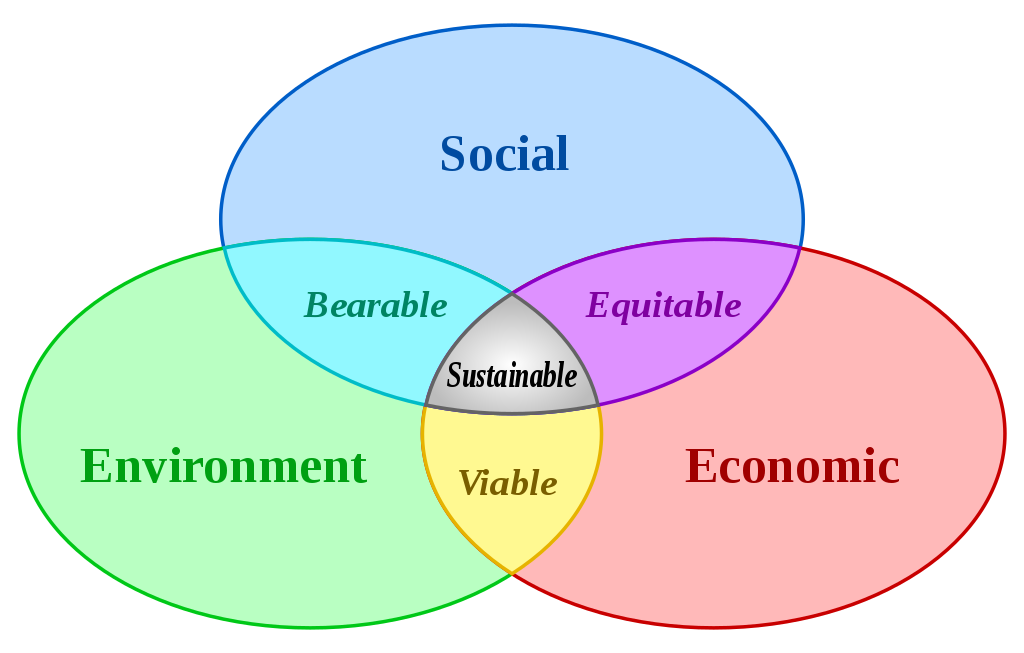![Sustainable development [Image: Wikimedia Commons]](https://fabbaloo.com/wp-content/uploads/2020/05/Sustainable_developmen_img_5eb099aa4dc35.png)
There’s an old saying, “There’s no time like the present,” and we should be applying that now to foundational growth in 3D printing.
Foundations are important: they provide the basis on which all future growth builds. A strong foundation is critical for a structurally-sound house or skyscraper, and just so with nascent technologies.
Part of the foundation for the nascent 3D printing industry should be rooted in sustainability.
Establishing best practices early is important. It’s challenging enough to encourage adoption of a wholly new technology suite; doing so with amendments to workflows that have already been put into place adds unnecessary challenge. Think about those who grew up with recycling programs in place compared to those who only had landfill options for all waste and later were introduced to recycling: adherence and consistency are lower, as the habit wasn’t ingrained early.
It’s heartening to see some major players in 3D printing take a stand now, when the industry is still in its early growth spurts, about the importance of sustainable practices.
A recent conversation with DSM’s Hugo da Silva highlighted that materials company’s stance, as he said:
“This is a fantastic opportunity for 3D printing, which is still a small, growing industry, to step toward sustainability, guaranteed less waste, guaranteed recycling infrastructure, to make sure to reuse materials and to use less materials. 3D printing has all the elements required to make this simple, easy, and cost-effective. This is something we’re really pushing as one of the leaders in the industry, and we’re pushing all the leaders in that direction. It’s not something that’s nice to have, it’s a key requirement. We want others to understand this is a business opportunity. Doing the best for the world is also a business opportunity for all of us in the industry.”
Further support comes from examination of the end-to-end life cycle for materials, as Digital Alloys explored in their recent discussion of metal 3D printing’s energy consumption:
“Metals production, from mining ore through manufacturing parts, accounts for 7% of our global energy use. While metal additive manufacturing (AM) has been promoted as a way to help us reduce our carbon footprint, this has not been well demonstrated with clear and complete information. Furthermore, there lacks a comprehensive comparison of energy consumption by the different metal AM processes. To optimize when, where, which, and how to implement AM, we must be able to assess its environmental impact and compare this to conventional manufacturing processes like CNC Machining.”
While both these takes are from a materials perspective, clearly the lessons transcend to the full workflow, from materials processing through to post-processing and final product/prototype shipping.
A few (of many more) keys to sustainability in 3D printing include:
-
Recyclability for materials
-
Lessening materials waste through additive, rather than subtractive, manufacturing
-
Energy consumption
-
Right-first-time manufacturing
-
Digital design and file transfer
-
Localization of production
-
On-demand production
Supply chain impacts via digital manufacturing are already reshaping the way logistics companies are thinking about 21st century production and distribution. Creating a file that can be sent (securely) across the world for production can significantly reduce the carbon footprint of manufacturing, for example, as cargo costs and environmental impacts can be lessened significantly.
Sustainability, as da Silva pointed out, isn’t just a good idea: it’s great business. Not only are customers increasingly drawn to companies with such initiatives in place, the bottom line can see significant positive impact. Reusing materials can be an obvious cost-saver, whether considering high-value metals or commodity bulk polymers. Cutting freight costs, reducing time to market, and reducing part count also effectively pay for themselves.
As more companies scale up operations, building in a sustainability focus now builds a strong ethos and practice.
After all, the industry is growing quickly — and there’s no time like today to think about tomorrow.











